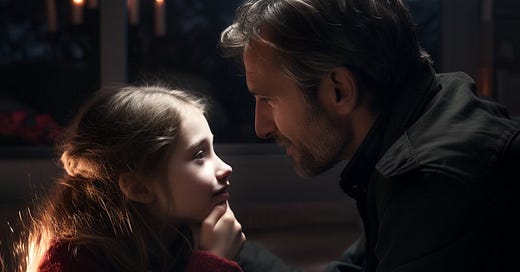One of the traps of life is falling into a habit of constant correction.
Our household has arrived at the point where our children are transforming into adults. What follows is a practice I’ve given myself to navigate the transition. I’ve found it’s had a positive impact on my “already adult” relationships as well.
Non-Action
Here’s a tough one…
…have the discipline to not-correct someone who is doing what we want.
By the way… do you Know Exactly What You Want?
Last summer, I wrote a series on this point.
These habits are a whole lot easier to implement when we let go of our need to “be right” in the moment and can see the larger picture of moving towards the life we desire => being loved and surrounded by competent high-performers.
These habits start small. We shouldn’t let the smallness fool us. They are a powerful way to improve our life experience.
With toddlers, the mantra was “give time for compliance.”
I find myself wanting to rush my kids… when they are doing exactly what I want.
I find myself tempted to open my mouth even when they are complying…
To slow myself down, I tuned into my own feelings when subject to constant minor correction. Just like my kids, I don’t like being told what to do, especially when I’m helping the situation.
The Next Level
Once we have a habit of non-action established it’s time to move on to something that will scare many of us.
Let. Things. Go. Wrong.
I came across this idea a couple years before our first child was born.1 Back then, I had no idea how useful it would become as a father.
The Child In Us
Now, if YOU were subject to relentless correction as a child then the above is going to be tough to execute.
Why?
I think you may find your motivation is to help the child avoid punishments YOU remember. The feeling of “we’re going to get in trouble” will be nudging you to intervene.
I’m sorry for you. I really am. The adults around you, failed you as a child.
However, the reality is… it’s up to our adult selves to fix the situation. There’s no need for us to pay the price of someone else’s errors.
To break the cycle, I found it helpful to remove every aspect of my life that was causing me to fear I would be found out.
I started that process before my kids arrived. It was a factor in meeting a wonderful woman, who became my wife.
Less Action With Others, More With Myself
Most the time when I am letting things go wrong… they don’t go wrong.
Pay attention to how often life works itself out without my intervention.
This is a powerful technique. Once established with small things, we can shift the habit to constant worries that pass through our heads.
A longstanding mantra: I won’t spend energy on things I don’t control.
It’s similar to a part of Awareness that discusses the joy that comes from leaving a person free to be themselves.
When we start working with the habits, we are blind to the energy we’re spending on things that don’t matter. If we want to Do Difficult Things then this energy is essential to retain.
Start small
In an area with low emotional stakes
Gradually expand the technique
When I say start small… I mean it. It could be as simple as letting someone arrange a drawer without input. I smile when I think back to my younger self being quite concerned with the layout of his sock drawer.
Take the desire to improve others and point it inwards.
I think it’s a theme of a chapter in The 4-hour Work Week by Tim Ferriss (2007).





